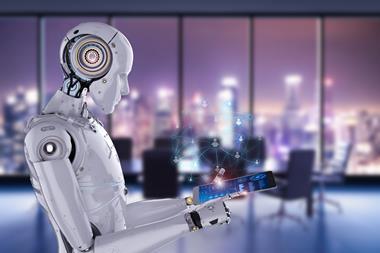Embracing emerging technology requires the right mindset and the right skills
Despite the vast advantages artificial intelligence (AI) and machine learning (ML) can bring to organisations, we still find substantial resistance by business leaders globally when it comes to adopting these valuable emerging technology trends.
This view is supported by an emerging tech research study undertaken by global IT professional association ISACA, which sought to understand the status of emerging tech uptake.
Not surprisingly the three top reasons for resistance of emerging technologies are cost of implementation (72%), cybersecurity risk (44%) and unclear business objectives (42%).
However, I propose that when it comes to the adoption of AI and ML in particular, an additional major barrier is a lack of understanding among executive teams of the real value these emerging technologies can bring to the organisation.
Overcoming uncertainty and fear
More than half of the survey respondents identified disruptive capabilities as the main characteristic of emerging technology. But with disruption and change often comes uncertainty, fear and apprehension.
In Hollywood blockbusters, robots and machines are often portrayed as futuristic and are depicted as the enemy, rarely are they shown to work with us. A key part of embracing emerging technology, ML in particular, is not to fight the robots but work with them.
It is true that, in some cases, adoption of AI and ML has made jobs redundant, but as some jobs disappear, new career options are being created in areas such as cloud architecture, data analysis and data science.
Currently, German car manufacturers are employing more people for their cybersecurity and IT teams than actual technicians to build the vehicles.
We are not in an era of change, but the change of an era, which means we need to disrupt ourselves before we are disrupted.
While attitudes about the value of AI and ML in the workforce are slowing shifting, there is much work to be done before it is fully accepted and embraced.
If there’s something constant in the universe (apart from speed of light), that’s change; the assurance that everything changes. And that includes interests, people, businesses and society at large.
The 4Vs of change
Velocity of change: everything changes very rapidly, without us even noticing sometimes. The speed of change is not constant but in constant acceleration.
Variety of change: the number of different systems, versions of applications and flavours of environments we have to manage is growing.
We go from the mainframe to the cloud, from Unix/Linux systems to Windows/Mac platforms, from different mobile operating systems to embedded environments … all that creates a chaos that must be not only managed but governed.
Volume of change: how many events per day a company must manage? Hundreds of thousands? Millions? Billions, maybe? It depends on the size and industry, of course, but if it’s done right, the maths tells it all: just multiply the number of users by the number of devices by the number of systems, the number of platforms, the number of clouds and by the number of networks.
Embracing the right methods, processes and procedures, and technology to collect and (super) correlate all that information is instrumental for success. The volume of change has to be governed as well.
Then, the fourth V of change is the Value of change: embracing change in a way that represents tangible value for the organisation or society; adopting change so that we can all go to a desired state, evolving to anticipate, withstand and recover from threats in a more robust and solid way.
The right skills
ISACA’s recent emerging technology global survey indicated that while 60% (ANZ) of respondents are optimistic about the impact of technological advancements on their career, half report their organisation is not investing in people skills to successfully navigate the changing tech landscape.
The global findings indicate that 48% of respondents report that executive leadership agrees that investment in training is insufficient.
To ensure we continue to escalate the adoption of AI and ML we need to nurture and invest in our young professionals to be brave and embrace radical innovation during their careers. We must encourage them to do different things, differently. Investing in emerging technology training is critical to ensure the IT workforce is at the cutting-edge of the evolving tech landscape.
When we achieve this, rather than being apprehensive about the disruptive capabilities of AI and ML, these technologies will be seen as truly positive and of extreme value to an organisation.
Ramses Gallego is International Chief Technology Officer, CyberRes CISM, CGEIT, CISSP, SCPM, CCSK, ITIL and COBIT Foundations




















1 Readers' comment